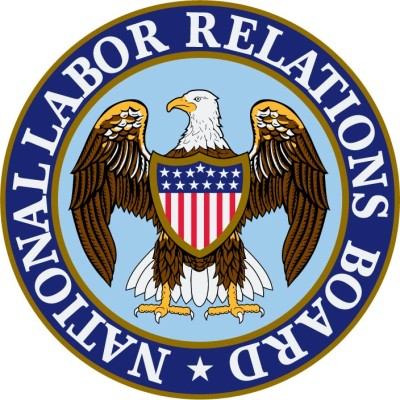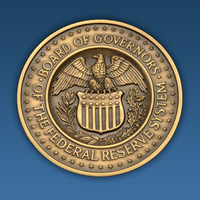The Supreme Court's Tug-of-War: Presidential Power vs. Agency Independence
May 23, 2025, 9:52 pm

Location: United States, District of Columbia, Washington
Employees: 1001-5000
Founded date: 1935
In a high-stakes legal drama, the Supreme Court has taken center stage, illuminating the delicate balance between presidential authority and the independence of federal agencies. The recent rulings surrounding the firings of two independent agency board members by President Donald Trump have sent ripples through the political landscape. The court's decisions, while not final, hint at a potential shift in the power dynamics between the executive branch and independent regulatory bodies.
The Supreme Court's recent actions have sparked a fierce debate. On one side, we have the conservative justices, who assert that the president wields significant power to remove agency leaders without cause. On the other, the liberal justices caution against the chaos that could ensue if this power is unchecked. The stakes are high, and the implications could reshape the very fabric of American governance.
At the heart of this controversy are Gwynne Wilcox and Cathy Harris, board members of the National Labor Relations Board (NLRB) and the Merit Systems Protection Board (MSPB), respectively. Both women were appointed by President Joe Biden and were abruptly fired by Trump. Their terminations have been challenged in court, raising questions about the president's authority over independent agencies.
The Supreme Court's unsigned order suggests that the president may indeed have the constitutional right to fire these board members without cause. This ruling, however, is not without dissent. Justices Elena Kagan, Sonia Sotomayor, and Ketanji Brown Jackson voiced their concerns, arguing that such a precedent could undermine the independence of federal agencies. Kagan's dissent echoes a sentiment that resonates with many: the potential for chaos if the president can remove agency leaders at will.
The historical context is crucial. The 1935 Supreme Court case, Humphrey’s Executor v. United States, established that presidents cannot remove independent agency members without just cause. This ruling has been a cornerstone of agency independence for nearly a century. Yet, the current conservative majority on the court appears eager to challenge this precedent. Kagan's dissent highlights the urgency of the situation, warning that the court's current trajectory could lead to a more subservient executive branch, reminiscent of the Hoover administration.
The implications of these rulings extend beyond the immediate cases of Wilcox and Harris. If the court ultimately decides that the president can fire independent agency leaders without cause, it could open the floodgates for future removals. This would fundamentally alter the relationship between the executive branch and regulatory agencies, potentially leading to a government that is less accountable and more susceptible to political whims.
The Federal Reserve, often viewed as a quasi-private entity, has been a focal point in this debate. The conservative justices have suggested that the Fed's unique structure provides it with a level of protection not afforded to other agencies. This distinction raises questions about the consistency of the court's reasoning. If the Fed is to be treated differently, what does that mean for other independent agencies? The potential for a patchwork of rules governing agency independence looms large.
The legal arguments presented by both sides are compelling. Trump's administration contends that the president's ability to remove agency leaders is essential for maintaining executive power. Solicitor General D. John Sauer emphasized that the independence of agencies should not come at the expense of presidential authority. However, the dissenting justices argue that the historical precedent set by Humphrey’s Executor is vital for ensuring that agencies can operate free from political pressure.
As the legal battles continue, the ramifications of these rulings will be felt across the political spectrum. The NLRB, for instance, plays a crucial role in resolving labor disputes and protecting workers' rights. Wilcox's position as the first Black woman on the board adds another layer of significance to her case. Her removal could send a chilling message to other agency leaders and employees about the potential consequences of standing up to presidential authority.
The Supreme Court's decisions also reflect broader societal tensions. The struggle for agency independence is not just a legal issue; it is a reflection of the ongoing battle over the role of government in American life. As the court navigates these complex waters, it must grapple with the fundamental question of how much power the president should wield over independent agencies.
In conclusion, the Supreme Court's recent rulings regarding the firings of Wilcox and Harris serve as a critical juncture in the ongoing debate over presidential power and agency independence. The court's decisions could reshape the landscape of American governance, with implications that extend far beyond these individual cases. As the legal battles unfold, the nation watches closely, aware that the outcome may redefine the balance of power in Washington for years to come. The stakes are high, and the path forward remains uncertain.
The Supreme Court's recent actions have sparked a fierce debate. On one side, we have the conservative justices, who assert that the president wields significant power to remove agency leaders without cause. On the other, the liberal justices caution against the chaos that could ensue if this power is unchecked. The stakes are high, and the implications could reshape the very fabric of American governance.
At the heart of this controversy are Gwynne Wilcox and Cathy Harris, board members of the National Labor Relations Board (NLRB) and the Merit Systems Protection Board (MSPB), respectively. Both women were appointed by President Joe Biden and were abruptly fired by Trump. Their terminations have been challenged in court, raising questions about the president's authority over independent agencies.
The Supreme Court's unsigned order suggests that the president may indeed have the constitutional right to fire these board members without cause. This ruling, however, is not without dissent. Justices Elena Kagan, Sonia Sotomayor, and Ketanji Brown Jackson voiced their concerns, arguing that such a precedent could undermine the independence of federal agencies. Kagan's dissent echoes a sentiment that resonates with many: the potential for chaos if the president can remove agency leaders at will.
The historical context is crucial. The 1935 Supreme Court case, Humphrey’s Executor v. United States, established that presidents cannot remove independent agency members without just cause. This ruling has been a cornerstone of agency independence for nearly a century. Yet, the current conservative majority on the court appears eager to challenge this precedent. Kagan's dissent highlights the urgency of the situation, warning that the court's current trajectory could lead to a more subservient executive branch, reminiscent of the Hoover administration.
The implications of these rulings extend beyond the immediate cases of Wilcox and Harris. If the court ultimately decides that the president can fire independent agency leaders without cause, it could open the floodgates for future removals. This would fundamentally alter the relationship between the executive branch and regulatory agencies, potentially leading to a government that is less accountable and more susceptible to political whims.
The Federal Reserve, often viewed as a quasi-private entity, has been a focal point in this debate. The conservative justices have suggested that the Fed's unique structure provides it with a level of protection not afforded to other agencies. This distinction raises questions about the consistency of the court's reasoning. If the Fed is to be treated differently, what does that mean for other independent agencies? The potential for a patchwork of rules governing agency independence looms large.
The legal arguments presented by both sides are compelling. Trump's administration contends that the president's ability to remove agency leaders is essential for maintaining executive power. Solicitor General D. John Sauer emphasized that the independence of agencies should not come at the expense of presidential authority. However, the dissenting justices argue that the historical precedent set by Humphrey’s Executor is vital for ensuring that agencies can operate free from political pressure.
As the legal battles continue, the ramifications of these rulings will be felt across the political spectrum. The NLRB, for instance, plays a crucial role in resolving labor disputes and protecting workers' rights. Wilcox's position as the first Black woman on the board adds another layer of significance to her case. Her removal could send a chilling message to other agency leaders and employees about the potential consequences of standing up to presidential authority.
The Supreme Court's decisions also reflect broader societal tensions. The struggle for agency independence is not just a legal issue; it is a reflection of the ongoing battle over the role of government in American life. As the court navigates these complex waters, it must grapple with the fundamental question of how much power the president should wield over independent agencies.
In conclusion, the Supreme Court's recent rulings regarding the firings of Wilcox and Harris serve as a critical juncture in the ongoing debate over presidential power and agency independence. The court's decisions could reshape the landscape of American governance, with implications that extend far beyond these individual cases. As the legal battles unfold, the nation watches closely, aware that the outcome may redefine the balance of power in Washington for years to come. The stakes are high, and the path forward remains uncertain.
